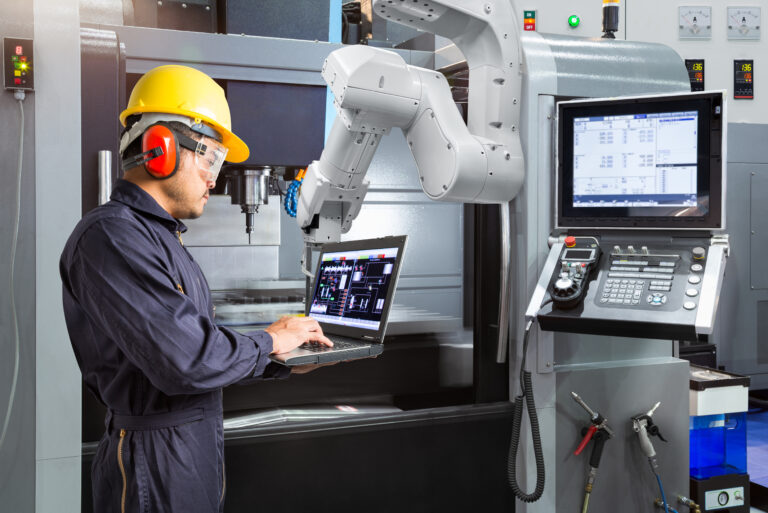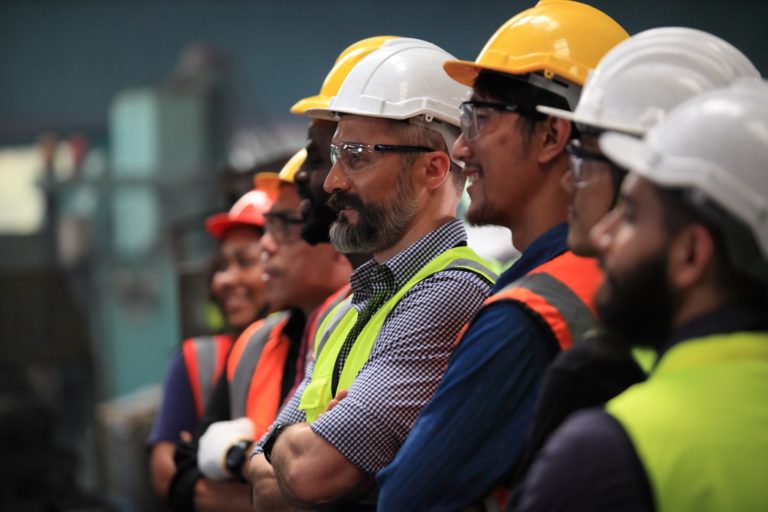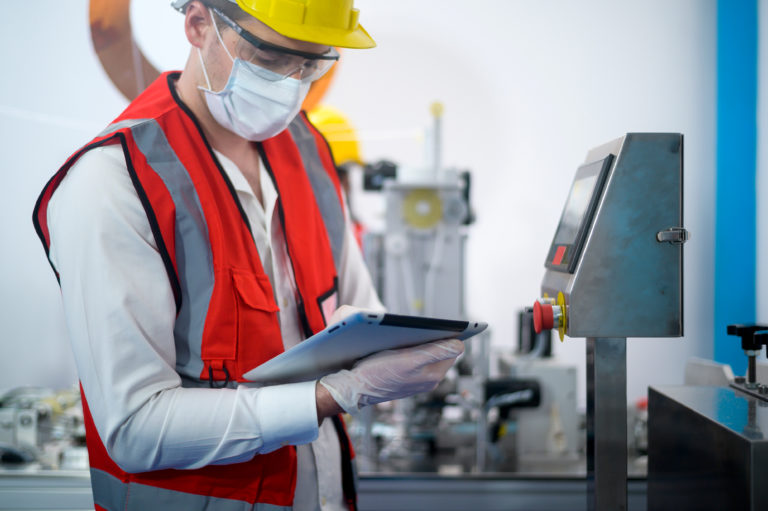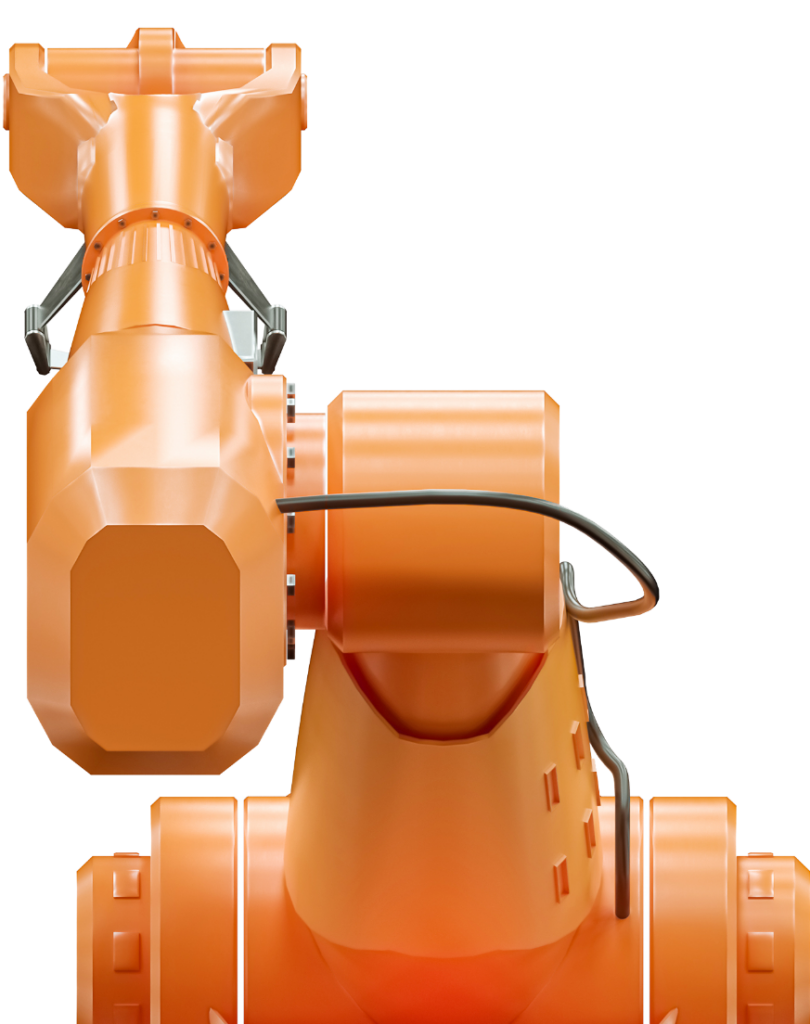Automation and robotics use specialized equipment to perform defined physical tasks, like packing products in boxes or spot welding metal frames. Sometimes we hear “automation” and think “robot.” With a range of payload and reach capacities, easy programming, articulated joints, and high speed, robots are a clear choice for applications requiring precise movements and repeatability. It’s no wonder they’re becoming more and more popular among manufacturers of all sizes, especially smaller, user-friendly collaborative robots.
But they can’t do it alone: there’s far more going on in most automated applications than just an articulated arm holding a tool or gripper. A robot is really just another machine in the larger automation repertoire. Sometimes the robot is the star of the automation show, and other times it plays a supporting role.
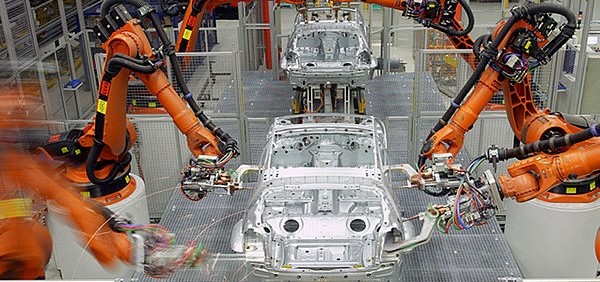
Manufacturing and industrial automation is about systems of integrated equipment following a program or other sequence to accomplish a task without direct human action. In this blog, we’ll take a look at this bigger picture of automation.
Robot-centered Applications
Some tasks feature a robotic arm (or multiple arms) doing the primary task. Additional automation equipment is often included to support what the robot is doing to help it get the work done even more efficiently. Here are some examples:
- Welding. In this example, arms hold and weld parts in a dedicated welding cell. Another welding cell features an automated positioner to flip the component so the welding robot can access both sides. In still other set ups, vision cameras and sensors can guide welding torches or laser welders held by a robot.
- Pick and place. Guided by computer programs or vision cameras, robots locate, grasp, and move items. Sorting applications, automated storage and retrieval systems (ASRS), and machine tending rely on this technology.
- Laser cutting. As with welding applications, robots hold the tool that does the work, but are aided by cameras, sensors, positioners, and infeed/outfeed devices.
- Material removal. Robots can be programmed to do finishing tasks such as deburring, grinding and polishing when components are held in place consistently. Automated positioners and sensors help ensure the task is performed accurately.
Beyond the Bot
Many automation applications rely on equipment besides robots, such as sensors, cameras, conveyors, and programming logic. Without these, many tasks would be difficult or impossible to automate efficiently. In many of these cases, the robots are there primarily to keep the job moving along smoothly. Sometimes, a robot isn’t even involved. Examples include:
- Packaging and material handling. In this automated packaging line, robots do some of the work, but a well-coordinated set of conveyors, electric and pneumatic actuators, and custom tooling coil and pack strips of plastic material into boxes and cases for shipping.
- Fastener installation. These machines drive rivets and weld nuts with great speed and precision. Components are fed into the machines, and the rest of the operation is controlled by a pre-programmed set of steps.
- Safety equipment. Interlocking switches, gates with switches to control the power supply, sensors, and light curtains are all critical to keeping workers safe in welding, laser cutting, or other hazardous applications. All of these monitor and control the equipment and environment to prevent operation when it’s not safe.
- Fixtures, workholders, and positioners. Turntables and clamps can be outfitted with servomotors to turn and rotate components for a task such as grinding, trimming, welding, or assembly.
- Automatic tool and fixture changeover. These can be designed to switch between sets of tools or fixtures (e.g. clamps, guards, jigs) based on a barcode system or a few taps on a touchscreen.
- Quality inspection. Robots can rotate or hold a component in front of a stationary camera for inspection or hold a camera and move it around the component. The “smart” camera is equipped with a database of acceptable images to compare with the component and identify errors or quality issues. Parts that don’t pass inspection can also be diverted along a conveyor or down a chute to remove them from the production line.
- Infeed/outfeed systems. Bar feeders, conveyors, chutes, rollers, or vibratory infeed bowls all transport items to or away from the machinery performing a task, such as a lathe or CMM. Tiny actuators can be built into stamping presses or injection mold machines to eject finished parts.
- Programmable logic controllers (PLCs). These are programmed to govern the movements of equipment with regard to angles, timing, and coordinated movements between more than one robotic arm or a robot and other machines. PLCs also control the logical sequence of the machine operation and can be used to collect, analyze and store data.
As we’ve shown here, automation is often centered on robotics, but not always. There are plenty of other specialized machines and equipment that allow for automation of tasks too, and in these cases, robots extend their capabilities. In some cases, a robotic arm isn’t needed at all.
New to automation? Start here!
As you explore the possibilities for automation at your facility, be sure to keep the full range of options in mind. Contact us today to discuss applications, ideas, and more!
